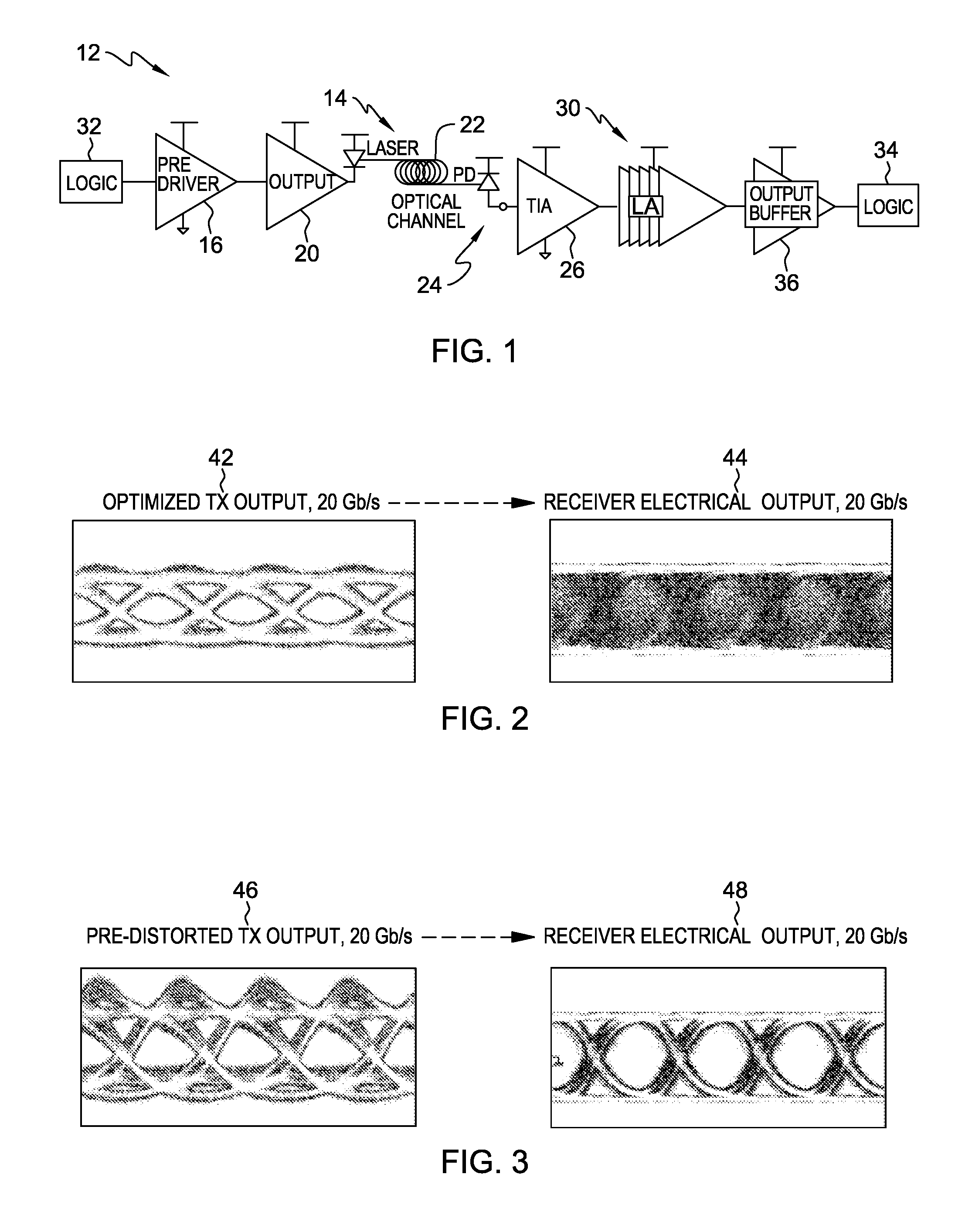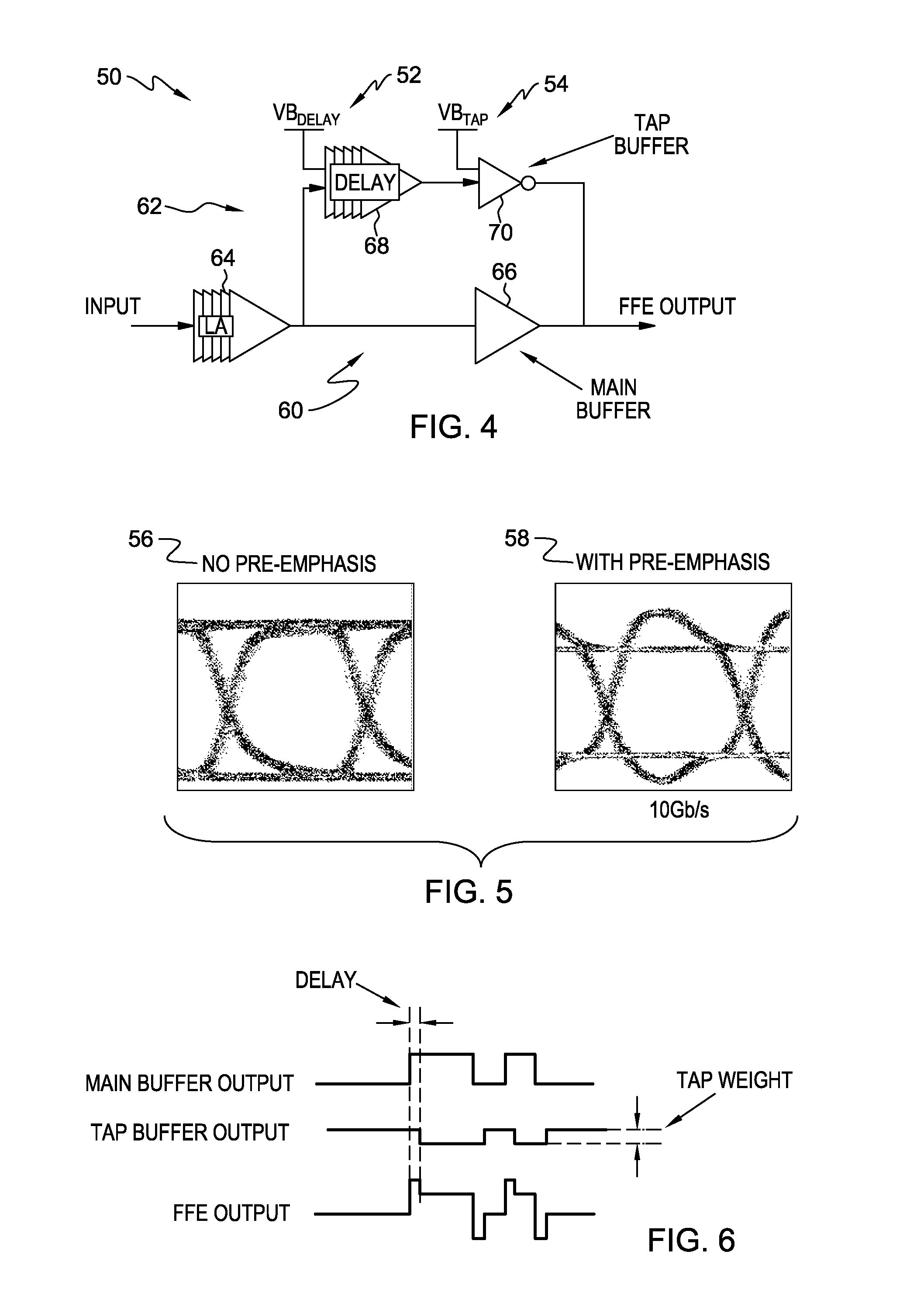Optical interconnect using optical transmitter pre-distortion
a technology of optical transmitter and optical interconnection, which is applied in the field of fiber optic transmission, can solve the problems of high electrical power consumption of circuits, difficult to realize multi-mode optical devices (lasers and detectors), and difficulty in achieving amplifier circuits with sufficient raw bandwidth and acceptable power consumption, so as to improve overall link performance and reduce jitter
- Summary
- Abstract
- Description
- Claims
- Application Information
AI Technical Summary
Benefits of technology
Problems solved by technology
Method used
Image
Examples
Embodiment Construction
[0025]A block diagram of a typical optical data link is shown in FIG. 1. A laser diode driver 12 (LDD) converts an incoming data stream into a modulation current that is used to directly modulate the optical output of a laser 14. The laser driver is typically divided into a pre-driver stage 16 followed by an output stage 20 that directly interfaces with the laser. The modulated optical output of the laser is routed through a channel 22, typically optical fiber or optical waveguides, and coupled into an optical receiver 24. The optical receiver 24, in the embodiment shown in FIG. 1, is a photodiode that converts the incident optical signal into a small electrical current. The photodiode is connected to a transimpedance amplifier (TIA) 26 that converts the photodiode current into a voltage with some amount of gain. The TIA is followed by one or more amplifier stages 30 that provide additional gain to increase the output amplitude of the receiver to a useful level (typically 0.1-1V).
[0...
PUM
 Login to View More
Login to View More Abstract
Description
Claims
Application Information
 Login to View More
Login to View More - R&D
- Intellectual Property
- Life Sciences
- Materials
- Tech Scout
- Unparalleled Data Quality
- Higher Quality Content
- 60% Fewer Hallucinations
Browse by: Latest US Patents, China's latest patents, Technical Efficacy Thesaurus, Application Domain, Technology Topic, Popular Technical Reports.
© 2025 PatSnap. All rights reserved.Legal|Privacy policy|Modern Slavery Act Transparency Statement|Sitemap|About US| Contact US: help@patsnap.com



